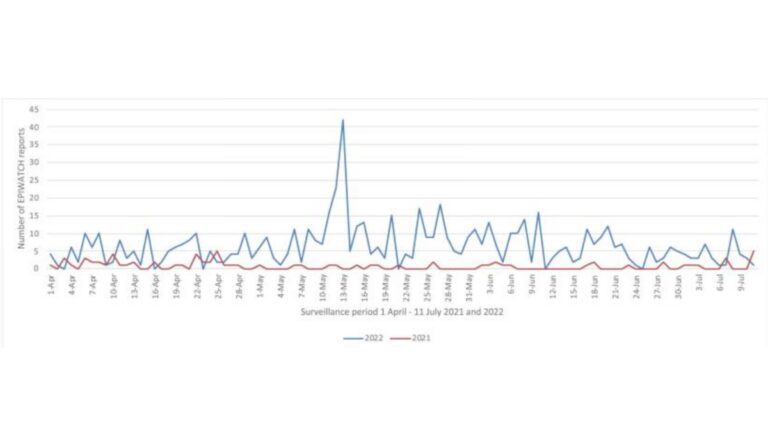Public Health Surveillance: Epidemics as Predicted by AI?
Artificial Intelligence (AI) surveillance technology may allow public health organizations to monitor and detect disease trends they otherwise might not see.

Read Time: 2 minutes
Published:
Can a computer replace me, taking over my job as a writer? Some say maybe. With the growing visibility of artificial intelligence (AI), more people are worried that their jobs are next. But how worried should public health workers be?
AI refers to software that mimics human thinking patterns. It reasons, it perceives, it learns – or at least, it seems to. And it can be used to understand trends in data, making it a valuable tool that can benefit the public health field.
EPIWATCH is an AI-driven observatory created with public health surveillance in mind. It uses AI to scan publicly available data (i.e., official reports, press releases, social media); any relevant articles are then sent to a trained human analyst for review.
D. Hutchinson and colleagues evaluated EPIWATCH as a tool that can detect early signs of epidemics occurring globally. They used the technology to monitor trends of mPox in retrospect, identifying possible reports leading up to the first official case being confirmed in the UK.
Given that the first case was not confirmed until May 2022, it is possible that cases occurred before this and were misdiagnosed instead. To capture potential misclassifications, the authors identified terms that might be related to mPox symptoms (i.e., fever, rash) and conducted a search of open-source data from April to July 2022, one month before to two months after the first case. As a comparison, they then compared reports of these symptoms from the year before, from April to July 2021.
The figure above shows that rash-like illnesses were 775% higher in 2022 (blue line) than the previous year (red line). EPIWATCH documented reports of rashes peaking in early May, just around the time that the first case was confirmed, suggesting that something new in the world might have been causing these common symptoms.
The interpretation of EPIWATCH still requires a human mind to make sense of trends and to pursue next steps in surveillance. But using the AI technology allows public health organizations to detect signals they otherwise might not and subsequently to direct resources to the necessary communities.
Databyte via D. Hutchinson, M. Kunasekaran, A. Quigley, A. Moa, and C.R. MacIntyre. Could it be monkeypox? Use of an AI-based epidemic early warning system to monitor rash and fever illness. Public Health, 2023.



